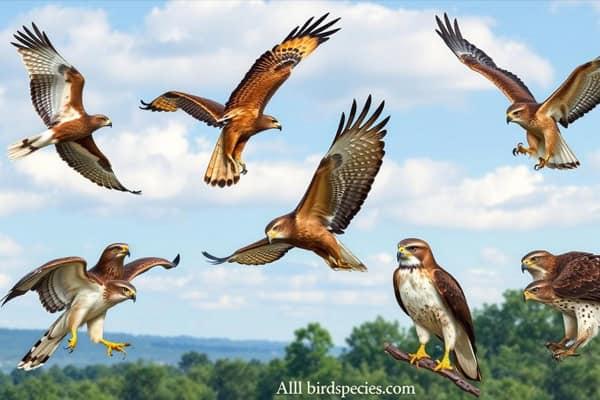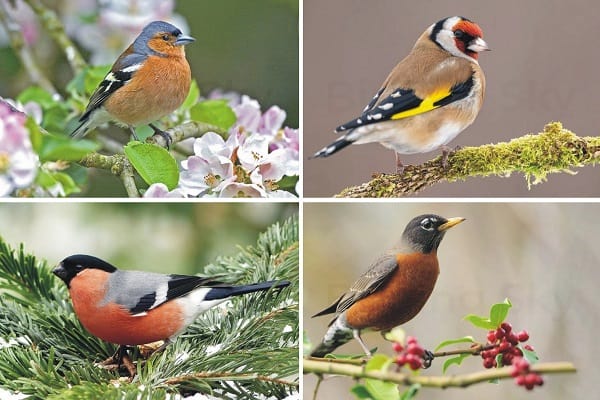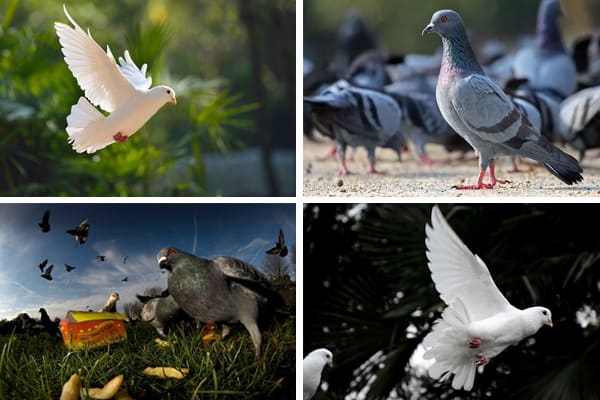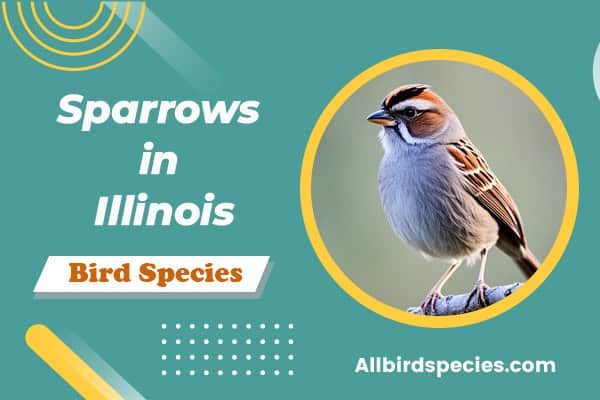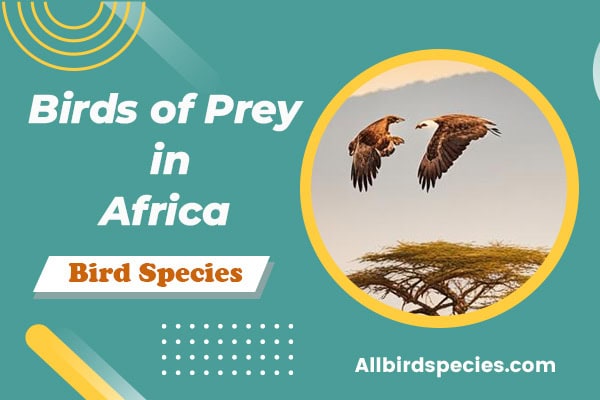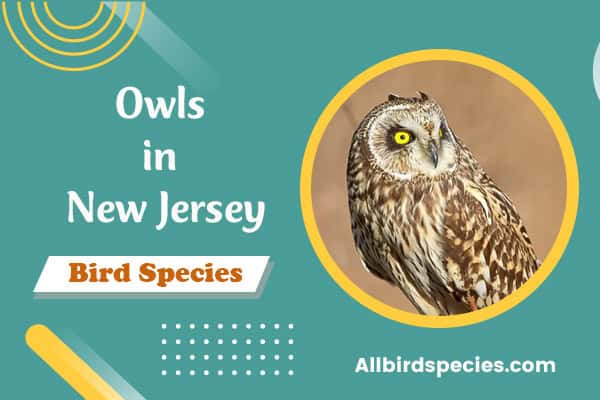Spotting 6 Types Of Hawks In Georgia (With Pictures)
Did you know Georgia has over a dozen hawks of species? It’s one of the top places for hawk watching in the southeastern U.S. This variety is great for bird lovers. It lets them try to spot hawks and learn about them in their homes.
In this article, you’ll learn about six different hawks in Georgia. You’ll see clear pictures to help you know them. Whether new to birdwatching or experienced, our tips will improve your hawk-watching. Hawks are important in nature, and knowing about them will make you appreciate them more.
Why Georgia is an Ideal Habitat for Hawks
Georgia is a top spot for hawks because of its great climate and varied landscapes. The state has forests, wetlands, and open fields. These places give hawks lots of chances to find food and live well.
The different natural areas in Georgia support a wide range of life. This makes it a perfect home for both local and traveling hawks.
Georgia has plenty of food for hawks to eat. This means hawks can hunt and live well all year. The mix of good food and places to live makes Georgia a key place for birds.
1. Red-shouldered Hawk
- Scientific Name: Buteo lineatus
- Size: 40–60 cm (16–24 in)
- Weight: 0.5–1.4 kg (1.1–3.1 lb)
- Lifespan: Up to 15 years
- Diet: Small mammals, amphibians, reptiles, and birds
The Red-Shouldered Hawk is a bird that stands out. It has bright reddish-orange underparts and a long tail. This makes it easy to spot. It lives in many places in Georgia, like forests and wetlands. It likes to nest in tall trees near water.

Identification Features
To spot a Red-Shouldered Hawk, look for these signs:
- Reddish-orange underparts
- Black-and-white banded tail
- Large wings with broad tips
- White spots on the wings during flight
- Prominent vocalization, often described as “keer keer keer”
Habitat and Distribution
This hawk likes places with open areas and trees. It loves:
- Deciduous forests
- Wetlands and swamps
- Riparian zones (areas adjacent to rivers)
In Georgia, you can find the Red-Shouldered Hawk in many places. It nests in tall trees near water. Its ability to adapt helps it thrive in different areas.
Diet and Hunting Behavior
The Red-Shouldered Hawk eats small mammals like:
- Voles
- Mice
- Small birds
They hunt by sitting quietly in trees. Then, they swoop down on their prey. This way, they catch food in their natural habitat.
Hawks in other Regions:
2. Northern Harrier
- Scientific Name: Circus cyaneus
- Size: 40–52 cm (16–20 in)
- Weight: 250–500 g (0.55–1.1 lb)
- Lifespan: Up to 10 years
- Diet: Small mammals, birds, and reptiles
Watching the Northern Harrier is very exciting. It’s known for its hunting ways and beautiful flight. This bird looks different from others because of its unique looks.

Appearance and Unique Characteristics
The Northern Harrier has a long body and wings. It has a white rump and a gray or brown body, depending on its sex. It also has an owl-like face that helps it hear better.
Breeding and Nesting Habits
This bird likes to nest on the ground, in places like thick grass or bushes. They nest in groups for safety. The female lays 4 to 7 eggs, and both parents help take care of the babies.
Feeding Strategies
This bird eats small animals like mice. It uses its great hearing and sight to find food. It flies low to spot its prey and then dives down to catch it.
| Characteristic | Description |
|---|---|
| Wingspan | Approximately 38 to 46 inches |
| Weight | 1.5 to 2.5 pounds |
| Coloration (Male) | Slate-gray |
| Coloration (Female) | Brown with streaks |
| Nesting Habits | Ground-nesting in colonies |
| Main Diet | Small mammals |
3. Red-Tailed Hawk
- Scientific Name: Buteo jamaicensis
- Size: 45–65 cm (18–26 in)
- Weight: 0.9–2.5 kg (2.0–5.5 lb)
- Lifespan: Up to 25 years
- Diet: Small mammals, birds, reptiles, and carrion
The Red-Tailed Hawk is a bird known for its striking looks and hunting skills. Learning about its physical traits, nesting habits, and prey can make you appreciate it more.
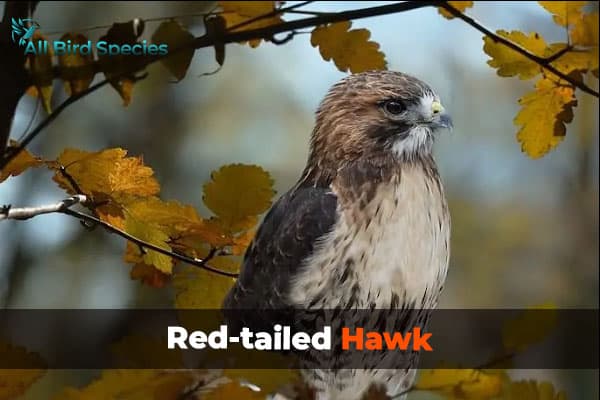
Physical Characteristics
The Red-Tailed Hawk species in Georgia has a broad, reddish tail. This is why it’s called the Red-Tailed Hawk. It has a wingspan of 45 to 52 inches, making it one of the biggest hawks in North America.
Its body is a mix of brown and white, with a light-colored belly. These traits help it stand out and make it a good hunter.
Nesting and Breeding Season
Nesting happens high up in trees, safe from ground predators. The breeding season starts in February. Males show off in the air to attract females.
Nests are made of sticks and can be used for years. Both parents take turns incubating eggs for 28 to 35 days. They make sure the chicks get enough care and protection.
Typical Prey and Hunting Techniques
The Red-Tailed Hawk mainly hunts small mammals like squirrels, rabbits, and rodents. It soars in the air to spot its prey, then dives quickly to catch it by surprise.
With sharp eyesight and strong talons, it can grab its food from high places. This shows its skill as a predator.
4. Cooper’s Hawk
- Scientific Name: Accipiter cooperii
- Size: 38–56 cm (15–22 in)
- Weight: 250–700 g (0.55–1.54 lb)
- Lifespan: Up to 15 years
- Diet: Primarily birds, but also small mammals and insects
The Cooper’s Hawk is the largest hawk bird known for hunting skills and looks. You can spot it by its rounded tail and orange bars. Knowing about its features and size helps us appreciate this bird more.

Distinctive Features and Size
The Cooper’s Hawk in ga has unique traits that set it apart. It is 14 to 20 inches long and has a wingspan of 29 to 37 inches. Its slender body lets it move fast and catch prey well.
It has a sharp beak and strong talons for hunting. Males are smaller than females, adding to their charm.
Nesting Behavior and Habitat Preferences
Cooper’s Hawks like to nest in wooded areas, high up in trees. They use twigs and soft stuff to make their nests. This makes them cozy.
They need places with lots of cover and food nearby. You might see them in suburbs, hunting near bird feeders. They can live in many places, showing they are strong.
5. Broad-Winged Hawk
- Scientific Name: Buteo platypterus
- Size: 31–43 cm (12–17 in)
- Weight: 400–1,000 g (0.88–2.2 lb)
- Lifespan: Up to 14 years
- Diet: Small mammals, birds, reptiles, and insects
The Broad-Winged Hawk is a fascinating bird with unique features and behaviors. It has a small size and wide wings, making it stand out. Knowing about this bird helps us appreciate its role in nature, especially when it migrates.

Identification and Size
This hawk is smaller than others, growing to 12 to 16 inches long. It has broad, dark wings and a short, fan-shaped tail with wide bands. Its brown upperparts contrast with its pale underparts, which have dark streaks. These traits make it easy to spot in wooded areas.
Behavior and Migratory Patterns
The Broad-Winged Hawk is both solitary and social, with a special migration pattern. During migration, they fly in huge flocks, sometimes with thousands of birds. This creates a breathtaking sight. They hunt by perching quietly, then swooping down on small mammals and insects.
Their migration happens in the fall. This shows the importance of habitats that support their life cycle.
6. Sharp-Shinned Hawk
- Scientific Name: Accipiter striatus
- Size: 28–38 cm (11–15 in)
- Weight: 70–200 g (2.5–7.1 oz)
- Lifespan: Up to 5 years
- Diet: Primarily small birds, but also insects
The Sharp-Shinned Hawk (Accipiter striatus) is known for its unique traits and actions. It is the smallest hawk and can fly through thick woods easily. Knowing about its special features can make birdwatching more fun.
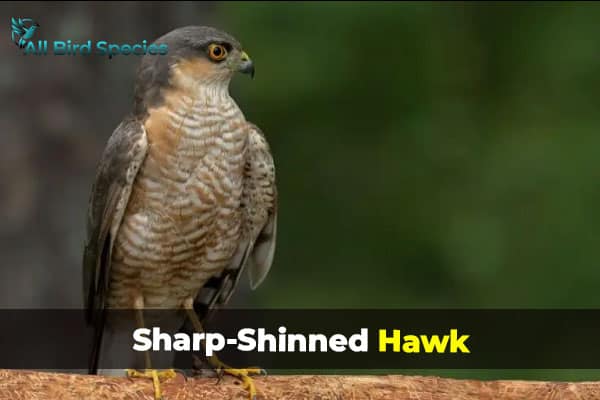
Overview of Characteristics
This hawk is very agile and has fast wingbeats. It is about 9 to 13 inches long and has a wingspan of 20 to 24 inches. It has blue-gray feathers and a long, rectangular tail that helps it move fast.
Its sharp face lets it watch its surroundings closely. This is helpful when it’s looking for food.
Hunting and Feeding Habits
The Sharp-Shinned Hawk mainly eats small birds. It uses its speed and surprise to catch them. Here’s how it hunts:
- It uses sudden ambush tactics to catch its prey off guard.
- It hides in dense vegetation while hunting.
- It uses sharp talons to hold onto its catch.
This hunting method is very effective. It watches from a high spot before quickly diving to catch its prey. This shows why the Sharp-Shinned Hawk is so good at being stealthy.
| Characteristic | Description |
|---|---|
| Size | 9 to 13 inches in length |
| Wingspan | 20 to 24 inches |
| Coloration | Blue-gray feathers with a rectangular tail |
| Main Prey | Small birds |
| Hunting Style | Ambush and quick strikes |
~Hawks in Georgia: Best Places to Spot Them~
Georgia’s diverse ecosystems are perfect for spotting hawks. You can find them in wetlands and wooded parks. Knowing where to look can make your birdwatching better. It lets you see these amazing birds up close.
Top Hawk Spotting Locations
- Okefenokee National Wildlife Refuge
- Chattahoochee River National Recreation Area
- Cloudland Canyon State Park
- Panola Mountain State Park
- Salem Pond, Cobb County
These spots in Georgia are great for seeing hawks. Visit in spring and fall for the best views. You’ll see many different hawk species.
Tips for Effective Hawk Spotting
- Visit early morning or late afternoon for the best views.
- Bring binoculars for a closer look.
- Stay quiet not to scare the hawks.
- Look for trees or fields where hawks hunt.
- Learn the calls and shapes of different hawks.
Knowing how to spot hawks makes your experience better. Enjoy watching wildlife in Georgia’s beautiful places.
| Location | Best Time to Visit | Common Hawk Species |
|---|---|---|
| Okefenokee National Wildlife Refuge | Spring and Fall | Red-shouldered Hawk, Bald Eagle |
| Chattahoochee River National Recreation Area | Year-round | Red-tailed Hawk, Cooper’s Hawk |
| Cloudland Canyon State Park | Spring | Broad-winged Hawk |
| Panola Mountain State Park | Year-round | Northern Harrier |
| Salem Pond, Cobb County | Fall Migration | Sharp-shinned Hawk |
Conservation Status of Hawks in Georgia
Learning about hawks in Georgia means knowing the dangers they face and how we protect them. Many hawks are safe, but some dangers affect their numbers.
Threats to Hawk Populations
Several dangers harm hawk numbers in Georgia, including:
- Habitat loss from cities and farms
- Food pollution from chemicals
- Changes in weather messing up their travels
- Illegal hunting and poaching
Conservation Efforts in Place
There are many ways to protect hawks in Georgia, such as:
- Fixing their homes to make them better
- Lawmaking to stop illegal hunting
- Teaching people why hawks are important
- Working together with wildlife groups and local folks
These actions help fight off dangers and improve the environment for hawks and other animals. Together, we can make a difference for Hawks in Georgia.
| Threat | Impact on Hawk Populations | Conservation Efforts |
|---|---|---|
| Habitat Destruction | Loss of nesting and hunting grounds | Habitat restoration initiatives |
| Environmental Pollutants | Reduced food availability and health risks | Monitoring and regulation of pollutants |
| Climate Change | Disruption of migration and breeding | Research and adaptation strategies |
| Illegal Hunting | Direct population decline | Strict enforcement of wildlife protection laws |
Photography Tips for Capturing Hawks
Capturing stunning photographs of hawks is more than just having a keen eye. You need the right birdwatching gear and know the best times to shoot. Here are some key tips to improve your hawk photography.
Choosing the Right Gear
High-quality photography equipment is essential for sharp hawk images. Consider these important elements:
- Camera: A DSLR or mirrorless camera offers better control over settings like shutter speed and aperture.
- Lens: A telephoto zoom lens (at least 200mm) is great for capturing distant birds without disturbing them.
- Tripod: A sturdy tripod or monopod helps keep your camera steady, especially in low light.
Best Times and Locations for Birdwatching
Timing and location are key to spotting hawks. Keep these tips in mind:
- Best Photography Times: Early morning and late afternoon are the best times to see hawks in action.
- Locations: Look for open fields, waterways, or woodland edges where hawks hunt and perch.
Read More🐦Related Articles:
| Small Birds with Long Beaks |
| Hawks in Illinois |
| Owls in Arkansas |
| Hummingbirds in Florida |
| Birds That Lay Blue Eggs |
Final thoughts
Georgia is a great place for hawk lovers. It has many hawk species that are beautiful and important for the ecosystem. Learning about their traits, habitats, and challenges helps us appreciate them more.
When you go birdwatching in Georgia, you’ll see more. You’ll learn about their behaviors and homes. Watching hawks up close lets you see their amazing hunting skills and how they adapt to their environment.
Remember, it’s not just about seeing hawks. It’s about caring for them for the future. We must work together to protect these birds for generations to come.

